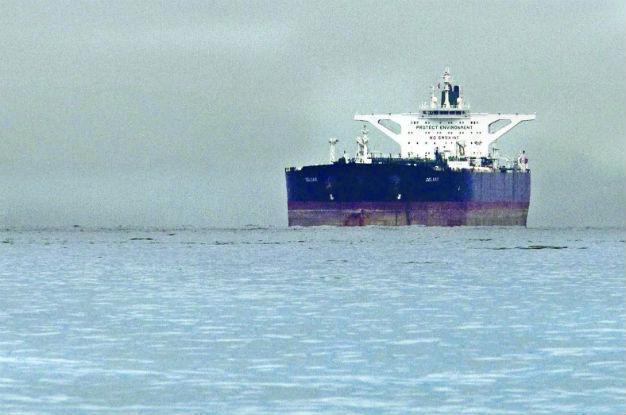Iran’s oil tankers point towards India and Europe as clock ticks down on sanctions
SINGAPORE - Reuters

REUTERS photo
With Iran ready to resume business as usual with the world under a historic nuclear deal, Tehran will target India, Asia’s fastest-growing major oil market, and old partners in Europe with hundreds of thousands of barrels of its crude.
Iran expects the United Nations nuclear watchdog to confirm on Friday it has curtailed its nuclear program, paving the way for the unfreezing of billions of dollars of assets and an end to bans that have crippled its oil exports.
Tehran plans to lift exports by 500,000 barrels per day (bpd) post-sanctions and gradually raise shipments by the same amount again, adding to a global glut and likely putting more pressure on oil prices which have already dropped 70 percent since 2014, to below $30 per barrel.
Iran has 22 Very Large Crude Carriers (VLCCs) floating off its coast, with 13 fully or almost fully loaded, mapping data on Thomson Reuters’ Eikon showed, carrying enough crude to meet India’s import needs for almost a week.
A senior Iranian source close to supply negotiations said that the country - which has the world’s fourth-biggest proven oil reserves - was targeting India as its main destination for crude.
“Indian crude demand is growing faster than other Asian countries. Like our competitors, we see this country as one of the main targets for Asian sales,” said the official, who spoke on condition of anonymity.
Iran hopes to raise its exports to India by 200,000 bpd, up from the 260,000 bpd currently shipped under sanctions’ restrictions, the official said.
At the right price, Indian refiners said they were keen to import more from Iran, as demand for fuel soars on 10 percent annual growth in car sales, a rate that is now faster than China’s.
“We have a long-lasting relationship with Iran and post lifting of sanctions we will evaluate the scenario,” said L K Gupta, managing director of India’s Essar Oil.
“It makes sense to buy oil from nearby options (like Iran),” said H. Kumar, managing director of another Indian oil firm, Mangalore Refinery and Petrochemicals, but added “intake will depend on prices.”
The Iranian official said there was not much room for major export increases to China, South Korea or Japan due to slowing demand and also because of a shift there towards more non-Middle East crudes.
Iran already trades limited amounts of oil mainly with Asian buyers legitimately under sanctions, but its crude exports have fallen to just over 1 million bpd, down from a peak of over 3 million bpd in 2011, pre-sanctions.
The Iranian official said Tehran planned to revive supply deals with European partners in order to ramp up exports.
Prior to sanctions, Iran was exporting up to 800,000 bpd to Europe with the main buyers being oil majors Royal Dutch Shell , Italy’s ENI and France’s Total Greek Hellenic Petroleum and Spain’s Repsol and Turkish firms.
Most former buyers have repeatedly said they would be happy to resume imports but commercial details could be discussed only after sanctions are lifted.
Iran’s Mehr news agency quoted officials from the National Iranian Tanker Company (NITC) as saying that as soon as sanctions are lifted some 200,000-220,000 bpd would be exported to France, Britain, Italy, Spain and Germany.
Shipping industry association BIMCO confirmed that European clients would be among the first post-sanctions.
